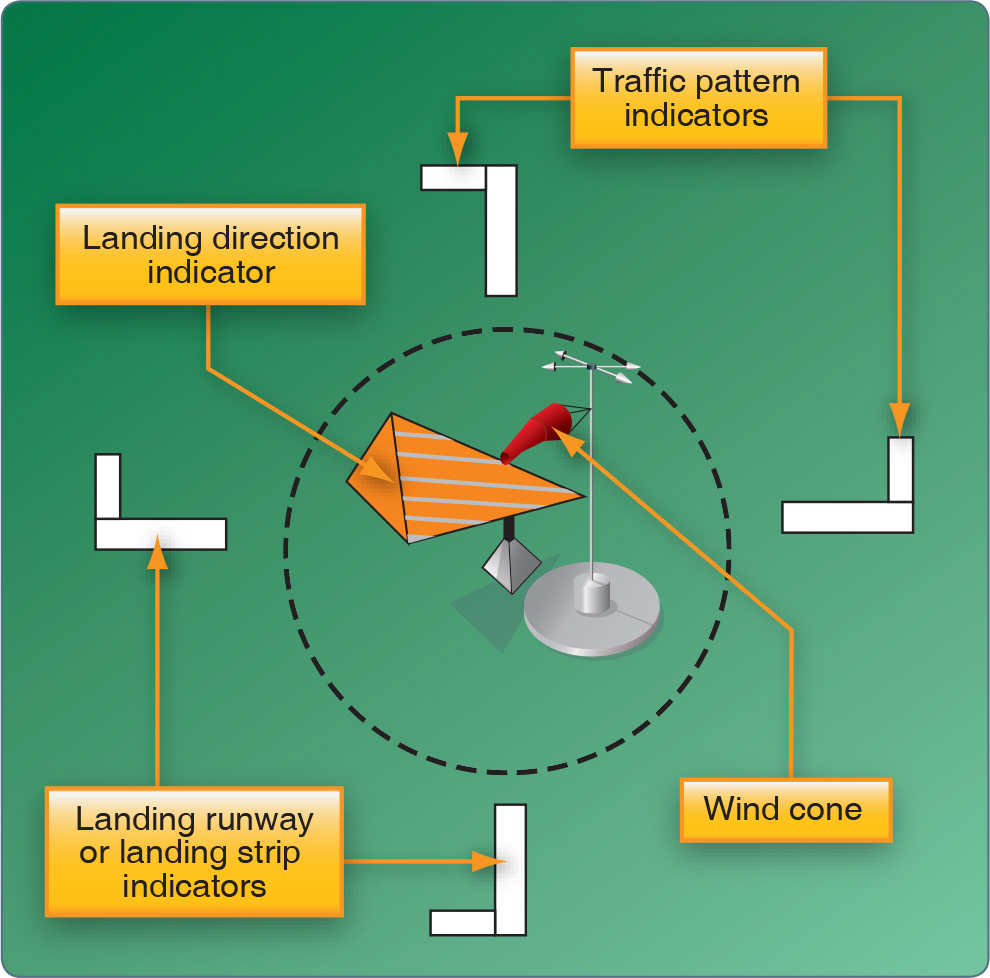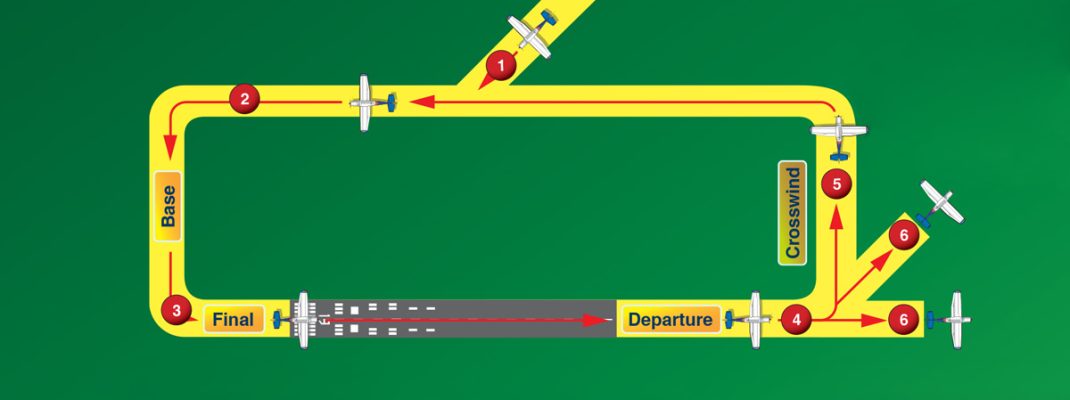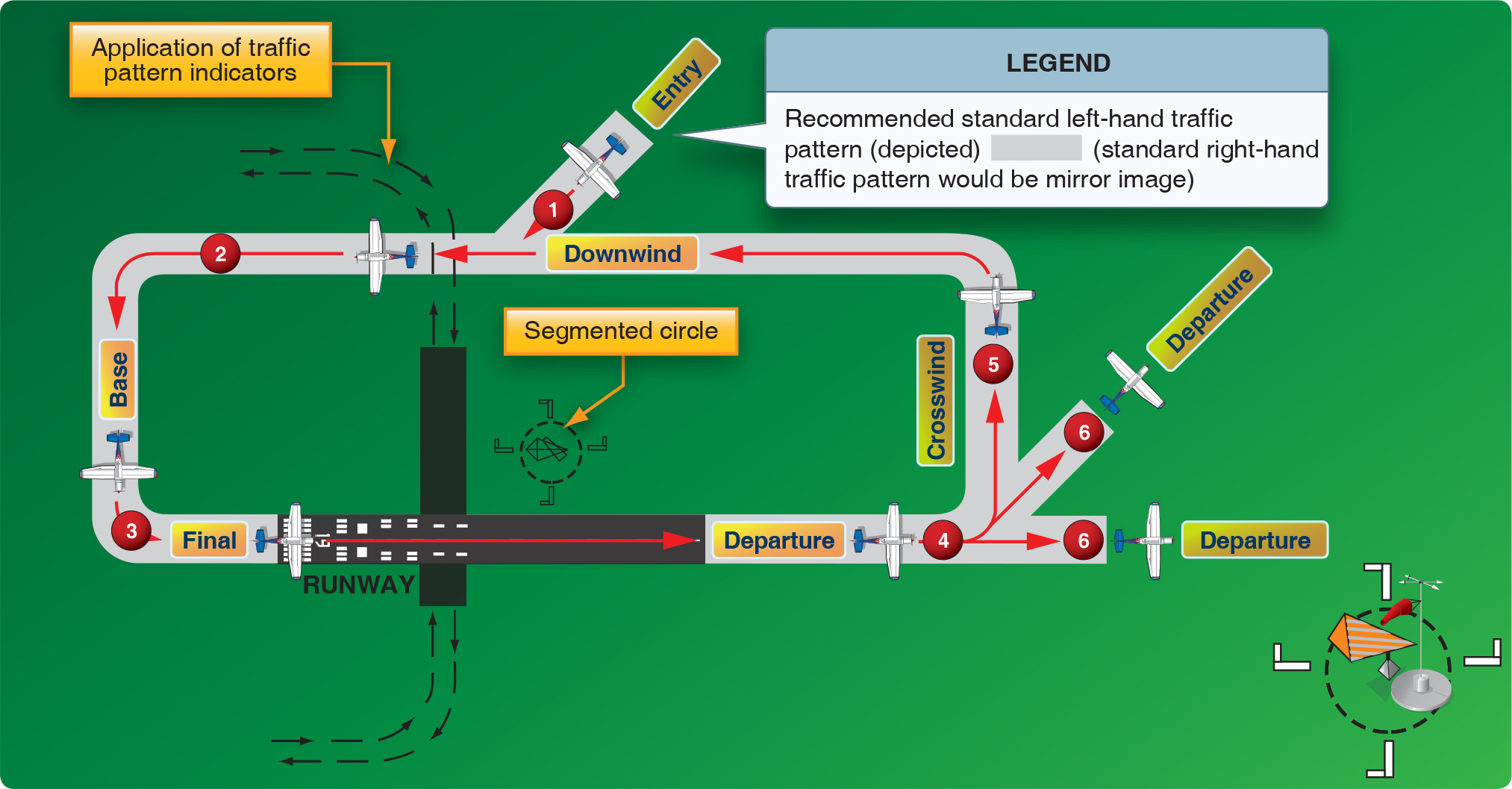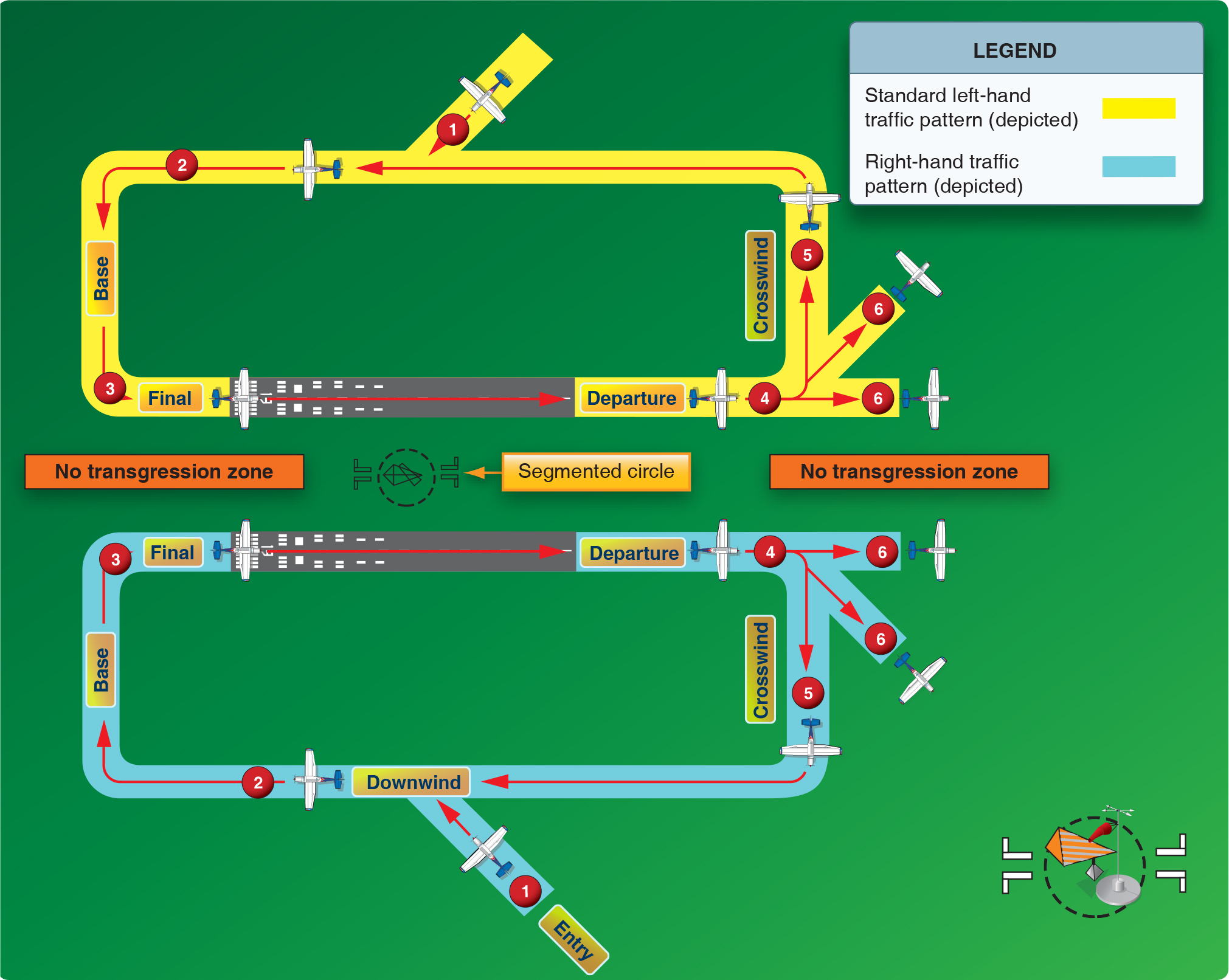Today we’re featuring an excerpt from the Pilot’s Handbook of Aeronautical Knowledge (FAA-H-8083-25).
At airports without an operating control tower, a segmented circle visual indicator system, if installed, is designed to provide traffic pattern information. Usually located in a position affording maximum visibility to pilots in the air and on the ground and providing a centralized location for other elements of the system, the segmented circle consists of the following components: wind direction indicators, landing direction indicators, landing strip indicators, and traffic pattern indicators.

A tetrahedron is installed to indicate the direction of landings and takeoffs when conditions at the airport warrant its use. It may be located at the center of a segmented circle and may be lighted for night operations. The small end of the tetrahedron points in the direction of landing. Pilots are cautioned against using a tetrahedron for any purpose other than as an indicator of landing direction. At airports with control towers, the tetrahedron should only be referenced when the control tower is not in operation. Tower instructions supersede tetrahedron indications.
Landing strip indicators are installed in pairs and are used to show the alignment of landing strips. Traffic pattern indicators are arranged in pairs in conjunction with landing strip indicators and used to indicate the direction of turns when there is a variation from the normal left traffic pattern. (If there is no segmented circle installed at the airport, traffic pattern indicators may be installed on or near the end of the runway.)
At most airports and military air bases, traffic pattern altitudes for propeller-driven aircraft generally extend from 600 feet to as high as 1,500 feet above ground level (AGL). Pilots can obtain the traffic pattern altitude for an airport from the Chart Supplement U.S. Also, traffic pattern altitudes for military turbojet aircraft sometimes extend up to 2,500 feet AGL. Therefore, pilots of en route aircraft should be constantly on alert for other aircraft in traffic patterns and avoid these areas whenever possible. When operating at an airport, traffic pattern altitudes should be maintained unless otherwise required by the applicable distance from cloud criteria according to 14 CFR §91.155. Additional information on airport traffic pattern operations can be found in Chapter 4, “Air Traffic Control,” of the AIM. Pilots can find traffic pattern information and restrictions, such as noise abatement in the Chart Supplement U.S.
Example: Key to Traffic Pattern Operations—Single Runway
- Enter pattern in level flight, abeam the midpoint of the runway, at pattern altitude. (1,000′ AGL is recommended pattern altitude unless otherwise established.)
- Maintain pattern altitude until abeam approach end of the landing runway on downwind leg.
- Complete turn to final at least ¼ mile from the runway.
- After takeoff or go-around, continue straight ahead until beyond departure end of runway.
- If remaining in the traffic pattern, commence turn to crosswind leg beyond the departure end of the runway within 300 feet of pattern altitude.
- If departing the traffic pattern, continue straight out, or exit with a 45° turn (to the left when in a left-hand traffic pattern; to the right when in a right-hand traffic pattern) beyond the departure end of the runway, after reaching pattern altitude.
Example: Key to Traffic Pattern Operations—Parallel Runways
- Enter pattern in level flight, abeam the midpoint of the runway, at pattern altitude. (1,000′ AGL is recommended pattern altitude unless otherwise established.)
- Maintain pattern altitude until abeam approach end of the landing runway on downwind leg.
- Complete turn to final at least ¼ mile from the runway.
- Do not overshoot final or continue on a track that penetrates the final approach of the parallel runway
- After takeoff or go-around, continue straight ahead until beyond departure end of runway.
- If remaining in the traffic pattern, commence turn to crosswind leg beyond the departure end of the runway within 300 feet of pattern altitude.
- If departing the traffic pattern, continue straight out, or exit with a 45° turn (to the left when in a left-hand traffic pattern; to the right when in a right-hand traffic pattern) beyond the departure end of the runway, after reaching pattern altitude.
- Do not continue on a track that penetrates the departure path of the parallel runway.







